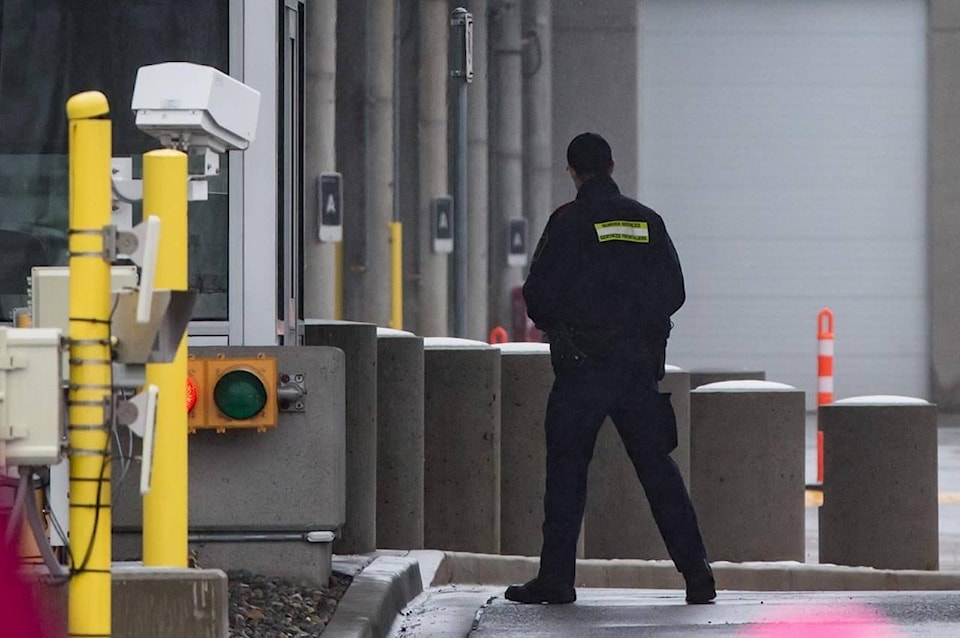A newly released memo shows Canada’s border agency signed off on rules to guide its most intrusive intelligence operations months ago, but the federal government has yet to issue the ministerial direction.
The memo, obtained by The Canadian Press through the Access to Information Act, describes efforts stretching back seven years to introduce formal government instruction on the Canada Border Services Agency’s use of surveillance and confidential sources.
One civil liberties group called the delay in issuing guidance “deeply concerning.”
The border agency’s 14,000 employees manage the flow of millions of travellers and commercial shipments entering Canada annually.
They collect, analyze and distribute information concerning people and goods at border points, air terminals and seaports.
Border officers can stop travellers for questioning, take blood and breath samples, and search, detain and arrest people.
The agency also covertly observes individuals, vehicles and places to gather information when there is reason to believe laws have been broken. And it gives money to confidential sources whose information leads to significant enforcement actions.
Written directions from the public safety minister have long been considered key measures to ensure accountability on the part of security agencies, given their extraordinary powers.
In September 2013, the Conservative public safety minister at the time agreed to issue a direction to the border agency concerning its sensitive investigative techniques, says the memo, prepared earlier this year for border agency president John Ossowski.
In 2014, Public Safety Canada, in consultation with the border agency and the Justice Department, developed such a direction but it “was never formally issued,” the memo adds.
In August last year the National Security and Intelligence Committee of Parliamentarians recommended the public safety minister provide written direction to the border agency on the conduct of sensitive activities.
“That direction should include accountability expectations and annual reporting obligations,” said the committee’s report, which became public in edited form in March.
The memo to Ossowski says a draft ministerial direction prepared for the president is aligned with the border agency’s policies and “ensures enhanced oversight and accountability for the agency’s risk-inherent activities.”
Officials recommended Ossowski approve the draft, the text of which was exempted from release under the access law.
The memo shows Ossowski signed off on the draft direction in late February. A month later, the federal government was seized with the worsening COVID-19 pandemic.
Louis-Carl Brissette Lesage, a spokesman for the border agency, said the direction had not yet been issued. “For any further questions, please contact Public Safety directly, as this is their policy.”
Mary-Liz Power, a spokeswoman for Public Safety Minister Bill Blair, said direction to the agency was forthcoming and would be made public.
“It is critical that there be clear direction given to our agencies on controls for officials engaged in sensitive national interest activities,” she said.
“Government and agency officials must be accountable to our laws, the oversight mechanisms that ensure their effective functioning and the ministers responsible for them.”
Formally setting out expectations in a ministerial direction is at the very low end of accountability measures for a public entity, especially one that has the authority to covertly collect intelligence, said Meghan McDermott of the British Columbia Civil Liberties Association.
“So it’s deeply concerning to us that it has yet to be issued,” she said.
McDermott acknowledged that COVID-19 has thrown all schedules off, but she noted the delay in this case seems to be part of a larger pattern, given that a draft direction was also developed several years ago.
“What is the holdup?”
Jim Bronskill, The Canadian Press
Like us on Facebook and follow us on Twitter.
Want to support local journalism? Make a donation here.
